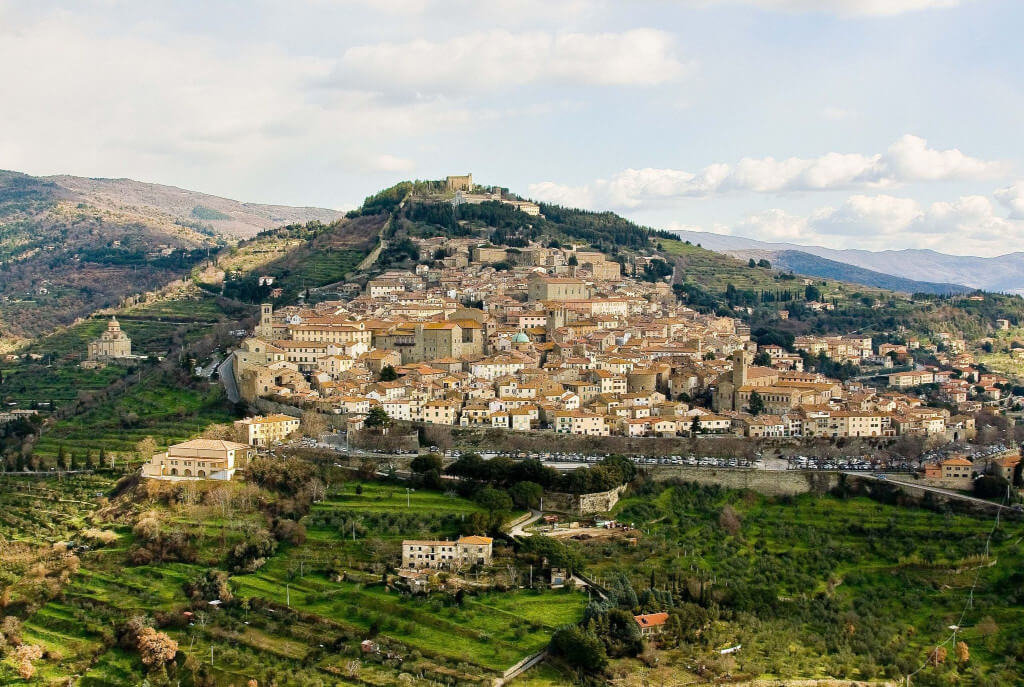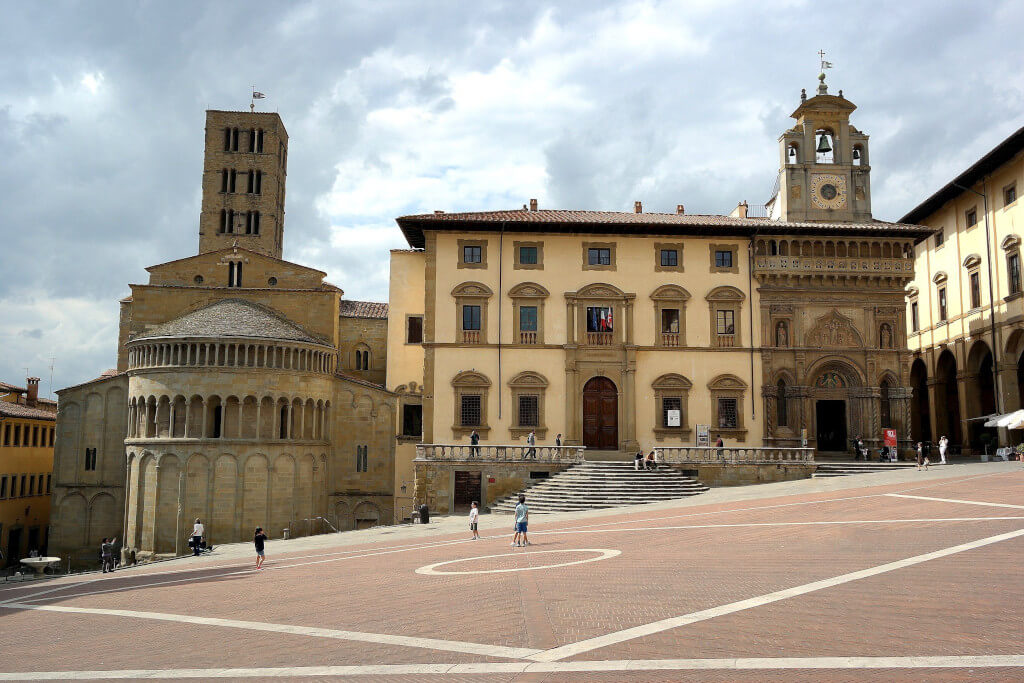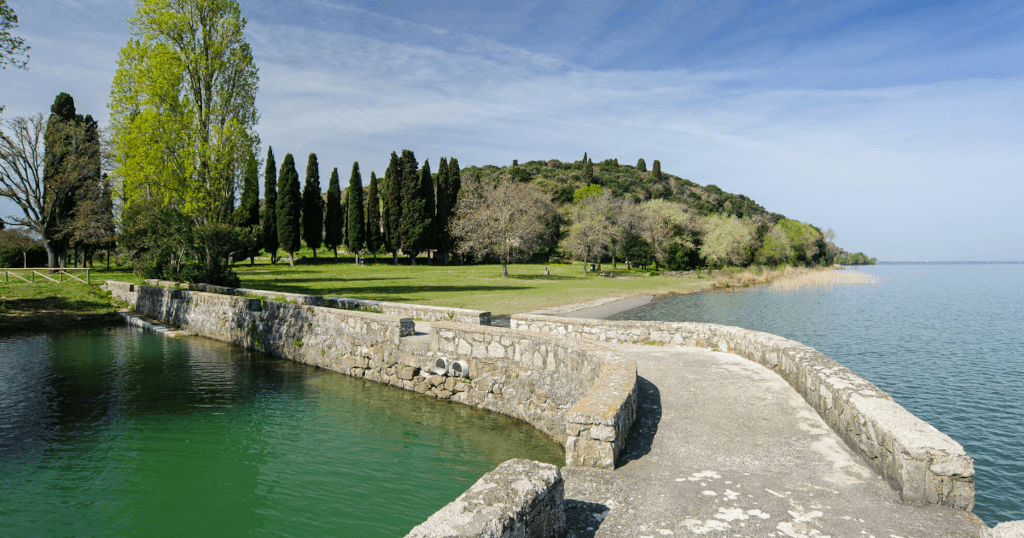Isola di Cortona is located in southern Tuscany, equidistant Florence and Rome. The property can be reached by car ("Autostrada del Sole", exit "Val di Chiana"), by train (Rome-Florence-Milan line, Camucia and Terontola stations), by plane using the airports of Rome, Florence and Pisa, as well as the small airport of Perugia. Isola di Cortona is also located a few steps from Cortona, Castiglion Fiorentino, Arezzo and the charming Trasimeno Lake.
Cortona (15’ by car)

Cortona is a town of just 20,000 inhabitants that is perched on a hill overlooking Lake Trasimeno and the Tuscan-Umbrian countryside. The primary development of the city was during the Etruscan period, from which the walls surrounding the city come, the thirteenth-century period of clash between Guelphs and Ghibellines, the period of the Grand Dukes of Tuscany (Medici and Habsburg-Lorraine) and the Italian Renaissance. During the world wars, Cortona was miraculously spared from bombing.
Essential to visit are: Piazza della Repubblica and the historic center, Museum of Etruscan Civilization (MAEC), Diocesan Museum, Fortress of Girifalco and Basilica of Santa Margherita, Franciscan Hermitage "Le Celle", Santa Maria delle Grazie del Calcinaio and Villa Bramasole (from which came the inspiration of the Novel "Under the Tuscan Sun").
Castiglion Fiorentino (15’ by car)

The Castiglionese center began to develop as a watershed between Arezzo and Cortona in the Etruscan era. The ancient river Clanis, which at the time crossed the Val di Chiana, was reclaimed by the Etruscans and constituted an important navigation route. In Roman times, it was artificially flooded, together with the whole ValdiChiana valley, which became marshy. It passed under the protectorate of the Medici, and later that of the Perugini. The plague in 1300 halved the population, who took refuge under the dominion of the Church and then returned to Florence, hence the name. After a passage to the Napoleonic garrison, it passed to the Lorraine. In 1849 Garibaldi arrived in the village to take refuge and refreshments after coming down from Cortona . The Second World War was the cause of devastation to the historic. center. December 19, 1943, the bombing was particularly bitter and caused the death of 71 civilians.
Essential To visit: the Palazzo Comunale, the Torre del Cassero, the Palazzo Pretorio, the Vasarian loggias.
Arezzo (40’ by car)

Arezzo, an Italian town of 100,000 inhabitants, was built in pre-Etruscan times. In the Roman era, it was an important garrison, which it existed even after the fragmentation of the empire thanks to its favorable position on the Via Cassia. Arezzo is the homeland of artists and poets who are part of the great artistic history of Italy, such as Francesco Petrarca, Giorgio Vasari, and in the vicinity of Michelangelo Buonarroti. The essential places to visit are: Piazza Grande (where the Antiques Fair has been held for almost 50 years), the Basilica of San Francesco (and the frescoes by Piero della Francesca), the Cathedral of San Donato, the Basilica of San Domenico (and the crucifix by Cimabue), Museum of Medieval and Modern Art, Giorgio Vasari's house museum, the Giostra del Saracino.
Visit Trasimeno Lake (30’ by car)

Lake Trasimeno is one of the most important lakes in Central Italy. It contains 3 islands within the lake: Isola Maggiore, Isola Minore and Isola Polvese. To visit them we recommend the ferry tour of the islands: leaving the car in San Feliciano, you can visit Isola Polvese, (2-3h), San Feliciano, Passignano, Isola Maggiore in that order. By bicycle (or on foot) you can also travel around the lake. It is also recommended to visit the castles of the lake: from the Rocca del Leone in Castiglione del Lago and the Torre dei Lambardi in Magione to the ruins of the Castle of Zocco. The Divine Painter, Perugino, was also born on Lake Trasimeno created there works of inestimable value.
